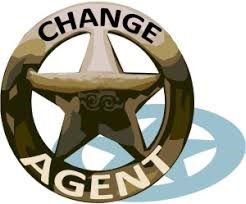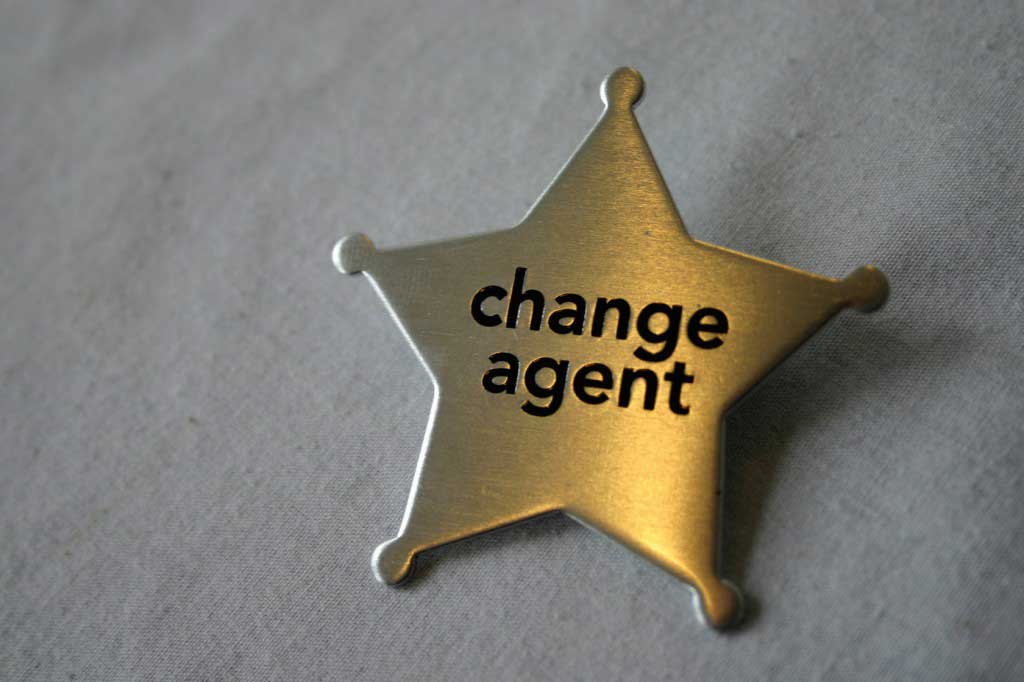
Fourth in a Four-part Series
After reading the title of this blog you may be asking yourself, “How do I, as just a major gift officer, have any influence to bring about a culture of philanthropy at my organization?”
We get this question all the time when we are out speaking on this subject. The answer is that you have a tremendous amount of influence, and you don’t even know it.
Actually, I wish every major gift officer was expected to help bring about a culture of philanthropy at their organization. But I haven’t seen it in any job description lately. Unfortunately, it’s very rare for leaders and managers to take up this mantle either, so it never happens – and you see so many non-profits struggle because donors are not central to the mission of that organization.
You do have the power, though. Richard and I have seen it happen when a grassroots effort takes hold of an organization and moves it toward a healthy culture of philanthropy. This is why I’m suggesting that going above and beyond as a major gift officer means you do your part in creating that culture.
Not only is it the right thing to do for the organization and your donors, but it will help make your job easier when everyone in your organization has a healthy respect for (and understanding of) the critical role that donors play in helping create an impact through your mission.
I want to give you some practical suggestions for how you can do your part to bring about that culture of philanthropy – a culture that will make working with your donors so much easier:
1. Develop internal relationships — As an MGO you are always trying to deepen your relationships with donors, trying to understand their passions and interests. You need to do the same with the staff that helps you do your work.
Really knowing the team of people who will help you create those great relationships with your donors is essential for your success. Great MGOs get to know their program people, finance, leadership and board, admin folks and (quite frankly) even the front desk person. Why? Because all these good people assist you in your work. You need to understand them, and they need to know what you do every day.
I’ve talked to finance people who have no clue what major gift officers do. They think you just travel and go out to nice places to have lunch. Sometimes all they know about you is what they see in your expense reports.
2. Communicate with leaders and managers — Unfortunately, you cannot expect much in the way of management of your work. Today, non-profit managers have so much on their plate, they don’t actually have time to manage. You have to be the one to take charge. Being proactive about the work you are doing allows leaders and managers to have a sense of comfort and trust.
When you tell them stories about your donors, it helps your manager to make the connection between their everyday work and the people you serve. You become a bridge between your donors and your managers and leaders. When you report on results against your goals, make them aware when things don’t go right, and seek their counsel, it helps to put fundraising, major gifts, and donors in the forefront of their minds.
3. Communicate with staff— When we visit non-profits and we talk to staff people, most of them have no clue about how well the major gifts team is doing. They don’t know who the donors are, or even what the major gift team does. From program to finance to HR to the janitor, pretty much the whole staff is in the dark about the major gift program. You have the power to change that.
Hold monthly staff meetings or ask to be on the agenda of your current staff meetings, so you can tell staff what exactly the major gift team is working on. In that moment, you will have the opportunity to tell stories about your donors. Doing that will be incredibly powerful for your staff, as you will help them to connect donors with making your mission happen.
Another idea is to send an email from time to time when a big gift arrives, writing about the donor and why they decided to give. Now, imagine you’re someone sitting in a cubicle in HR and you read that. You’ve totally changed their perspective on what major gifts is all about.
4. Set aside time to work in program— Whatever it is your non-profit does, spend some time every month volunteering to do it. You will not only endear yourself to skeptical program staff, you will come away changed by your experience. That change will help you to become better able to communicate to donors the need you are asking them to solve or alleviate. Great major gift officers spend their time “getting dirty.” It makes them better at their job.
5. Invite donors to interact with staff — Remember those staff meetings I told you about? What if you invited donors to them and asked them to tell their stories? It’s powerful for your staff to hear it.
Several years ago we were working with a large health organization, and every month they held a huge staff meeting in a small auditorium. At every one of these staff meetings they set aside time for a donor to tell the staff why they gave. There was not a dry eye in the auditorium. Yes, even the janitorial staff had tears.
If you start putting these practical-yet-powerful ideas into place, you will be going above and beyond what is expected of you. By doing it, you’ll help create and foster a culture of philanthropy at your organization.
One last thing. It is no small thing to do the work you are doing. It’s not easy, but it’s important stuff. The world needs you; your donors need you. (Tweet it!) And you can be great at it by going above and beyond the expectations the non-profit community has for a major gift officer. Why do anything less?
Jeff
PS – We have two free white papers if you want to read more on this subject: Building a Culture of Philanthropy and Six Ways to Do What’s Expected in Major Gifts.
Read the whole series on Going Beyond What is Expected of You:
- Really Knowing Your Donor
- Being Real
- Providing Outrageous Service
- Helping Create a Culture of Philanthropy (this post)




0 Comments